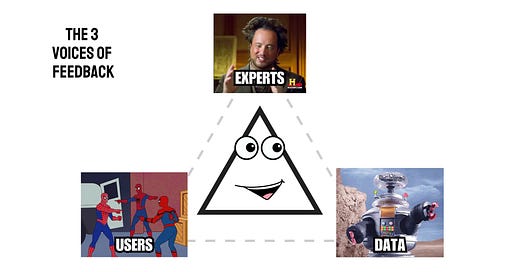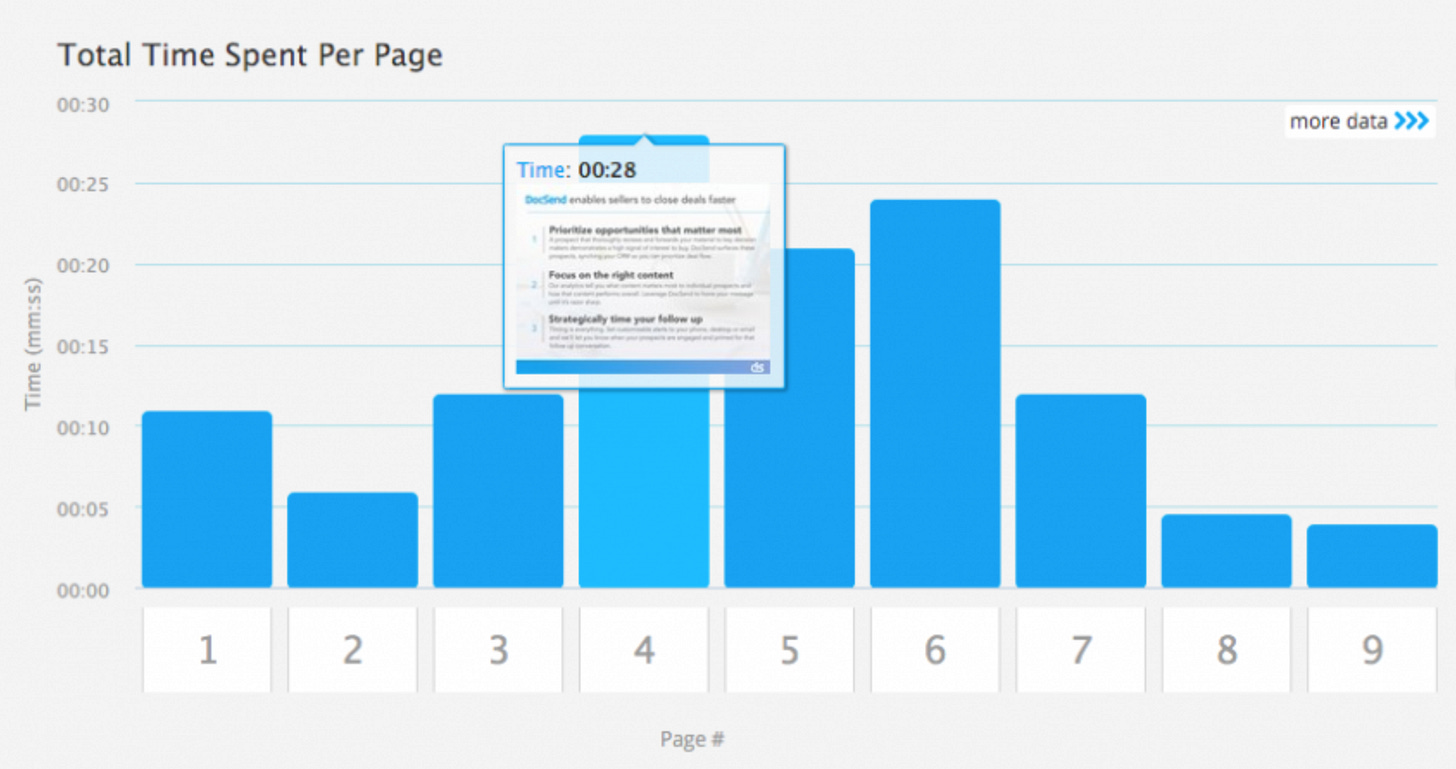This past week I somehow, inexplicably, completed the manuscript for my book. I cannot overstate how fulfilling that is… makes the book feel pretty real.
Next up is a final round of beta reading (sign up here, reader link coming this Thursday).
One of the big frameworks I lay out in the book is how creativity is never a solo act. There is always a feedback loop, even for the most introverted creators (it’s me, I’m the problem, it’s me).
The best ideas don’t happen in a vacuum — they evolve through some version of feedback or at least observation. But, not all feedback is created equal.
There are three essential sources or “voices” of feedback in any creative process.
Experts – People with relevant experience or expertise
Users – The intended audience or consumers
Data – Measurable results or impact
I call this the creative feedback triangle.
When you have all three, you create confidence, clarity, and momentum within a project.
One common mistake is leaning too heavily on one source while neglecting the others. It’s a good list to check yourself against when you get stuck.
As an example, for writing my book, here is how I use each feedback voice:
Expert: Recommendations from other writers, editors, and publishers
Users: Multiple rounds of edits and suggestions from beta readers
Data: Measuring where beta readers stop reading
The beta reading software I use is great for this. It allows for simple feedback options for readers to quickly express positive or negative sentiment, and optionally comment with additional context.
The main goal of a book is to help a reader. If they do not finish reading your book, then you have failed. Quick, anonymous reactions make it easier to pinpoint where readers get confused or bored.
DocSend is another great example of software that provides valuable data feedback. It lets you send your startup pitch deck via a tracking link and records viewer activity, showing metrics like time spent on each slide and where they stopped.
This is incredibly useful for understanding how a presentation is engaging (or not engaging) end users.
Next time a project is going slow or you feel creatively stuck, consider if you’re missing one of the three feedback voices. Your best work happens when you’re getting feedback from experts, users, and data.







So helpful and love the diagram